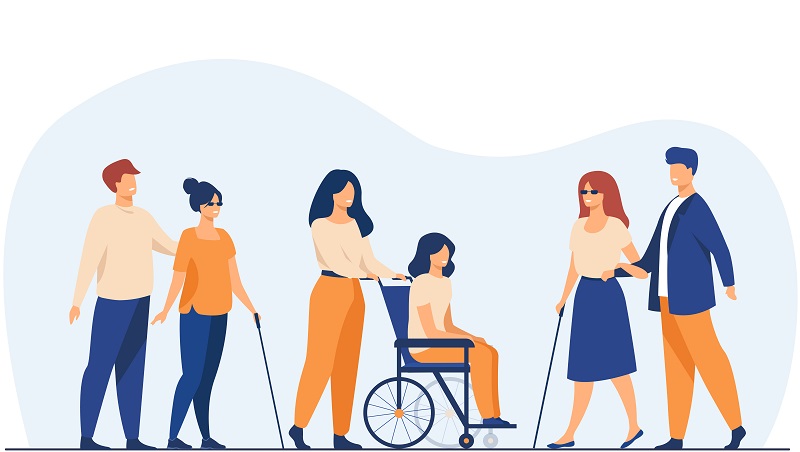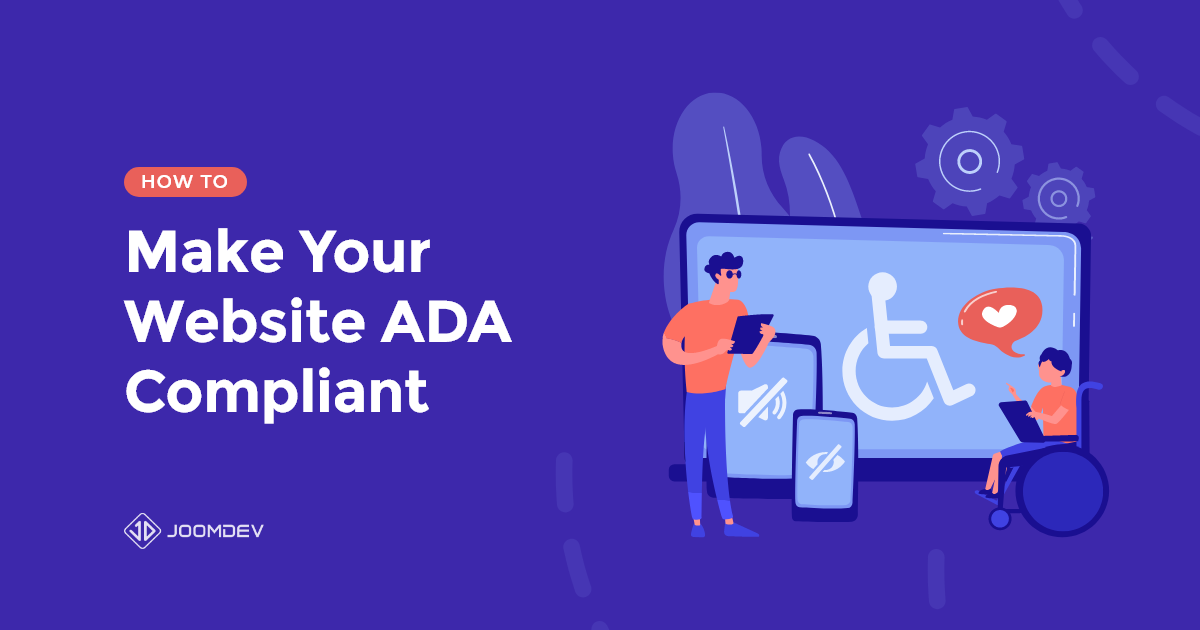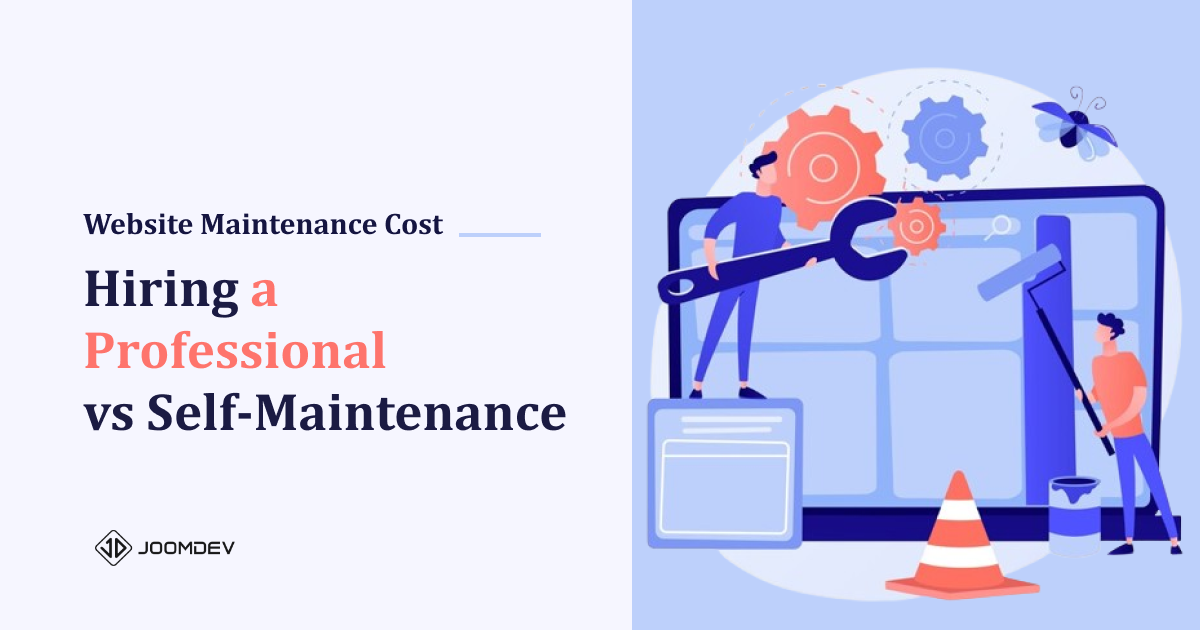Did you know that lawsuit was even filed against popular restaurants like Domino’s Pizza and Burger King for not making their website ADA compliant? They were sued by individuals with disabilities for not making their websites fully accessible.
Well, this article will help you to figure out the first and most important question which is “How to make your website ADA compliant?”
Also, have you ever thought about contacting a consultant to make your website ADA compliant?
Well, if not, then it’s high time you consider doing so, as it has a crucial role to play in determining the overall access of your website.
The fact remains that if a website is not fully accessible then more than 70% of potential customers leave that website. It is not an option but a requirement to improve the accessibility of your website to make sure that users are happy with your website.
Here, in this article, we have gathered all information that you might want to know about making your website ADA compliant.
Make Your Website ADA Compliant
- What is ADA Compliance?
- Why is ADA Compliance Necessary for Your Website?
- Which Websites Need to be ADA Compliant?
- How to Tell Whether Your Website is ADA Compliant or Not?
- What is WCAG?
- Four Principles of Accessibility
- Three Levels of WCAG Compliance
- What Compliance Level Should You Aim For?
- Checklist for ADA Compliant Website
- Ensure Your Website Audio/ Videos/ Images/ Files have Descriptive Alt Tags:
- Review the Style Elements of Your Website:
- Include Keyboard Support in Your Website Design:
- Utilize Best Content Developing Practices:
- In the Header Code, Identify the Language of Your Website:
- Have ARIA Landmarks on Your Website pages
- In Conclusion
What is ADA Compliance?

The letters ADA stand for the Americans with Disabilities Act which became law in 1990. This law primarily protects people with disabilities against discrimination by keeping businesses open to the public. Considering that many businesses have moved online, ADA compliance has extended from physical places like hospitals to anything a user can interact with, which includes websites.
As ADA was created before the online economy made its way up, you must also follow the globally accepted Web Content Accessibility Guidelines to execute best practices for making your website accessible.
Following accessibility standards not only help your website avoid legal implications such as lawsuits but also expands the exposure of your brand to people with disabilities. If you have an accessible website then more people will be able to navigate your website to purchase, thus you will increase business conversions.
Why is ADA Compliance Necessary for Your Website?
It is common for people to wonder whether they should pay attention to the accessibility of their website or not. If you’re one of them, then trust me, there are enough good reasons to make your website ADA compliant. Let’s take a look at the 5 important reasons to create an ADA-compliant website.
- It increases your target audience
About 15 percent of the world’s population has a disability, who cannot access your website. If your website is not accessible, you’re missing out on millions of potential customers, who might be interested in your products and services. And you could lose some of your customers to competitors because your website is not accessible to people with disabilities.
- It improves your SEO ranking
Following Web Content Accessibility Guidelines enables you to equally appeal to search engines, screen readers, and users. Ultimately, it will help in improving your website’s SEO ranking. Therefore, you should seriously consider alternative image text and video transcripts.
- It means overall better website usability
Making your web pages easier to operate, navigate, and comprehend will allow users to find what they’re looking for. So, your website will likely convert more leads, because everyone will trust that they can easily find the content they require.
- It reduces risks of any penalty
Any pages created or edited after January 18, 2018, are required to be at least grade A compliant, with grade AAA being the highest. To avoid legal costs for non-compliant websites, it’s best to make any necessary website changes that adhere to the ADA compliance guidelines.
- It may help your reputation
Another benefit is that not only do your customers know how valuable they are to your business, but those customers tell their friends and relatives, thus more people will know you made sure to make your website ADA compliant. Hence, making your website ADA compliant is a great way to set you apart from your competitors and get some positive press for your business.
Which Websites Need to be ADA Compliant?
Generally, yes all websites can be and should be ADA compliant. If want to know which websites are obliged to be ADA compliant, then here are examples:
- If a website falls under the public accommodation or connected to a physical location like a bank, gym, museum, hotel, restaurant, etc it needs to be accessible.
- If a website is completely web-based, then it needs to have an accessible web presence.
- If a website deals with commercial activities such as selling of products or services, then having ADA compliance is must.
- If financial transactions are taking place on a website, then also ADA compliance is necessary.
How to Tell Whether Your Website is ADA Compliant or Not?
Now after knowing that you need to make your website ADA compliant, you must be asking yourself “Is my website ADA compliant?”
Well, to find out whether your website is ADA compliant or not, you can test both manually and automatically.
Automatic checking for ADA compliance of website can be done using various accessibility evaluation tools, here are some of the free accessibility evaluation tools:
- Accessibility Checker by Intent Based
- aCe by accessiBe
- ANDI by Social Security Administration
- Web Accessibility Check by AlumniOnline Web Services
For manually checking the accessibility of your website, below are the steps:
Review Present WCAG Guidelines
Explore the recent Website Content Accessibility Guidelines (WCAG) to know about recommendations and tell whether your website follows them or not. The World Wide Web Consortium (W3C) encourages that new and updated content use the most current version of WCAG, as content that conforms to WCAG 2.1 also conforms to WCAG 2.0. The versions of WCAG recommended by the World Wide Web Consortium (W3C) are as follows:
- WCAG 2.0 which was published in 2008
- The current version is WCAG 2.1 which was published on 5 June 2018
- WCAG 2.2 which is scheduled to publish in 2021
Audit the Codes Used to Develop Your Site
Having a website developer review the codes and CSS (Cascading Style Sheets) of your website can help identify if your website complies with the ADA compliance guidelines. Also, using web accessibility tools to find out accessibility issues can help with making your website ADA compliant.
What is WCAG?
WCAG refers to Web Content Accessibility Guidelines, which are part of a series of web accessibility guidelines. Considering, lack of specific guidelines in the text of the ADA, the WCAG guidelines are often cited by the department
of justice as the standard reference. WCAG guidelines are published by the Web Accessibility Initiative (WAI) of the World Wide Web Consortium (W3C), so that following these guidelines make your website ADA Compliant.
Four Principles of Accessibility
The WCAG approach for creating accessible digital content is based on four main principles: Perceivable, Operable, Understandable, and Robust (POUR)
Perceivable
Present information and user interface components in such a way that users of your website can easily perceive them.
Perceivable Guidelines
Text Alternatives: Add alt tags also known as “alt attributes” or “alternative text” for any non-text content with the aim to help those with disabilities, who use assistive technology like screen readers for image conveying the image in words, rather than by sight.
Time-based Media Alternatives: Provide time-based media alternatives.
Adaptable: Make it easier for users to adjust the appearance and organization of web pages by creating content for your website that can be presented in different ways without losing its structure or information.
Distinguishable: Allow users of your website to see and hear content easily, such as separating foreground from background.
Operable
The navigation and user interface components must be operable by users. This means that the interface should only require interaction that the user can perform.
Operable Guidelines
Keyboard Accessible: Enable availability of all functionality from a keyboard.
Enough Time: Offer enough time to users of your website for reading and using content.
Seizures and Physical Reactions: Ensure to avoid designing content that leads to cause seizures and physical reactions.
Navigable: Help users by providing them ways to find content, navigate, and identify where they are.
Input Modalities: Ensure that functionality is accessible via all pointer input devices, to make it effortless for users to operate through various inputs beyond the keyboard.
Understandable
Operation and information of the user interface must be understandable by users of your website.
Understandable Guidelines
Readable: Make text content readable.
Predictable: Allow the pages of your website to easily operate and appear in a predictable manner.
Input Assistance: Avoid and correct mistakes by helping users of your website.
Robust
The content of your website must be robust enough, such that a large array of user agents including assistive technologies can interpret the content reliably.
Robust Guidelines
Compatible: Ensure compatibility with user agents, which include assistive technologies.
Three Levels of WCAG Compliance
The success criteria of the four principles of accessibility listed above are identified with one of the three priority levels.
Level A (Minimal Compliance): Level A prohibits elements that would cause trouble in making your website accessible, websites are required to attain at least this level. Websites that do not meet Level A of WCAG compliance are exceedingly difficult or impossible to use by people with disabilities.
Level AA (Acceptable Compliance): Level AA is used in most accessibility rules and regulations around the world which include the ADA. Achieving this level makes your website usable and understandable for the majority of people including those with disabilities.
Level AAA (Optimal Compliance): Level AAA would be ideal to make the web experience truly equal for all users. Achieving this level makes your website accessible to the maximum number of users, and makes this experience easy.
What Compliance Level Should You Aim For?
Most development teams are aiming to meet level AA. This is the level that is legally required for specific sites and is the one that is commonly suggested when you’re tasked with ‘making a website ADA compliant.
If you want to strengthen your existing website by making it ADA compliant, we’d suggest accomplishing the Level A criteria first and then progressing to Level AA.
Checklist for ADA Compliant Website
No, there are no hard and fast guidelines to how to make a website ADA compliant. Well, there are some smart tips that can make your website easily accessible for people with disabilities.
Let’s take a look at those smart tips here:
Ensure Your Website Audio/ Videos/ Images/ Files have Descriptive Alt Tags:
Alt tags are used for describing the elements of a website to visually impaired persons. Alt tags are nothing but metadata that gives text descriptions of website audio or videos clips to screen readers and search engines.
Review the Style Elements of Your Website:
Design your website while keeping in mind all types of users including disabled ones, who might browse your website. Accordingly, your website’s navigation must include different font styles, sizes, colors, and even background adjustments; to allow people with disabilities to view your website easily.
Include Keyboard Support in Your Website Design:
Did you know that many people with disabilities are not able to use mousepads or trackpads and completely depend on keyboards or outside devices to navigate through your website? Therefore, ensure to create a web design such that it works great with keyboard support.
Utilize Best Content Developing Practices:
The more simple and conversational your website content, the easier it will be for users of your website to perceive it. Thus, write understandable content, and divide big paragraphs into smaller sections by using headlines, sub-heads, bullets, and other formats appropriately to help you in making your website ADA compliant.
In the Header Code, Identify the Language of Your Website:
Identify the language of your website on the header code to help users to read the text of the website based on their preferred language. Because many users rely on text readers to navigate a website.
Have ARIA Landmarks on Your Website pages
ARIA (Accessible Rich Internet Applications) is an accessibility initiative to help people with disabilities to read a website more easily. Having ARIA landmarks allows you to add elements in your web pages to specify the most important areas, which helps the audience with the location of the content, what they are reading or where to proceed next, etc.
In Conclusion
It may seem like a lot at first sight, but many of the practices to make your website compliant are already considered industry best practices (for example alt tags) and have a great many benefits to your reputation, usability, SEO ranking, and more. We also recommend teams start the guidelines and “Checklist of ADA Compliant Website” list for making your website ADA compliant during the design phase of your website. Waiting for development may waste precious time, resources, and cause deliverable delays eventually.








